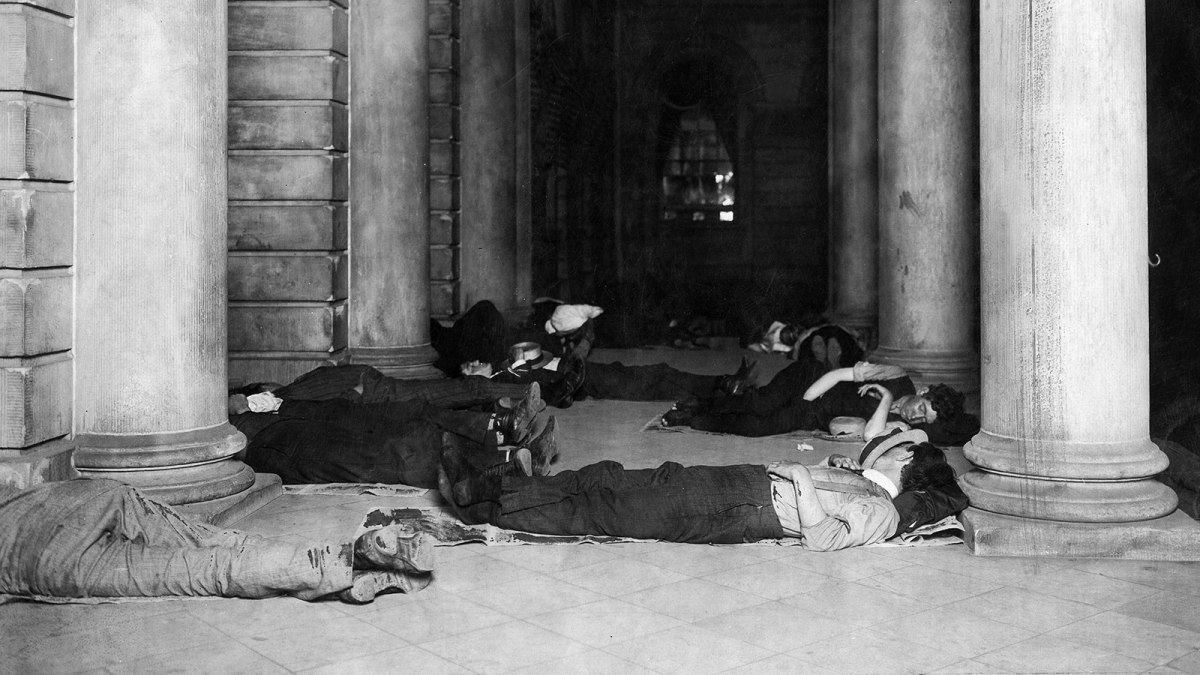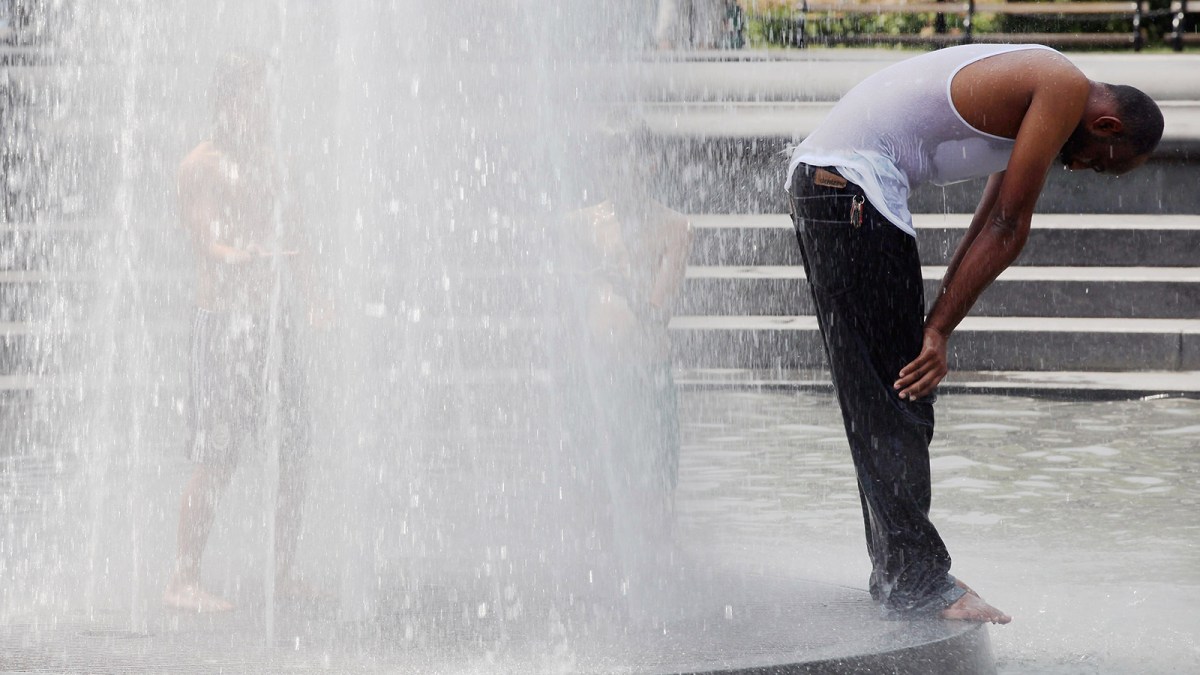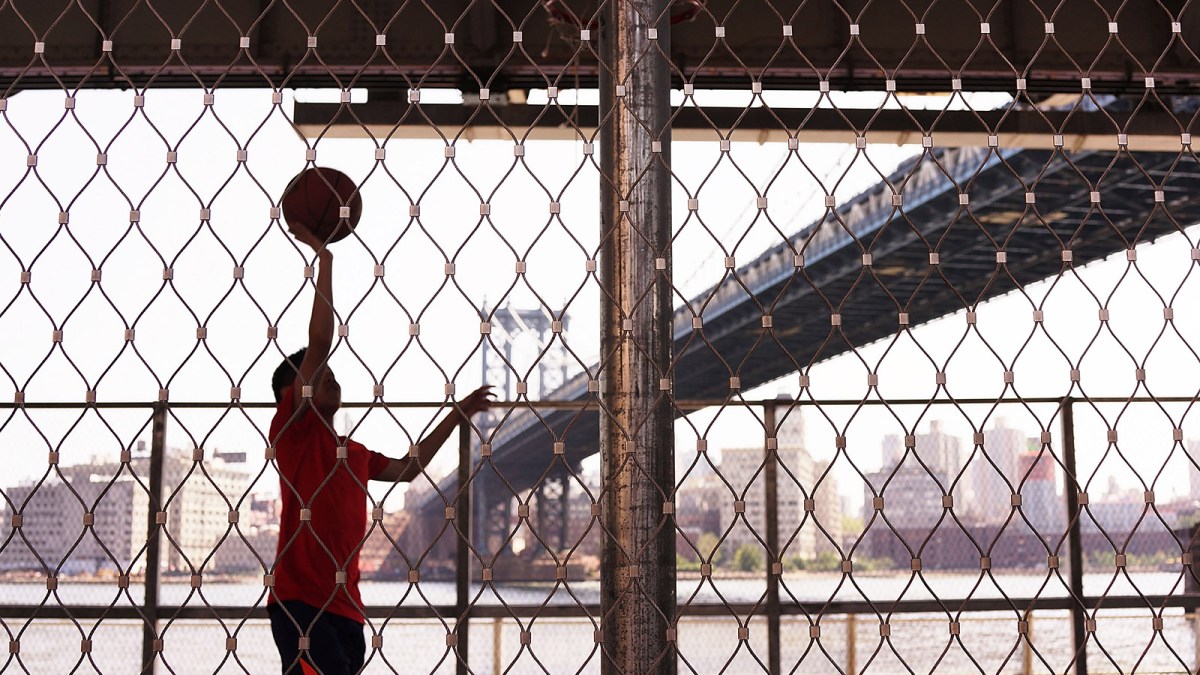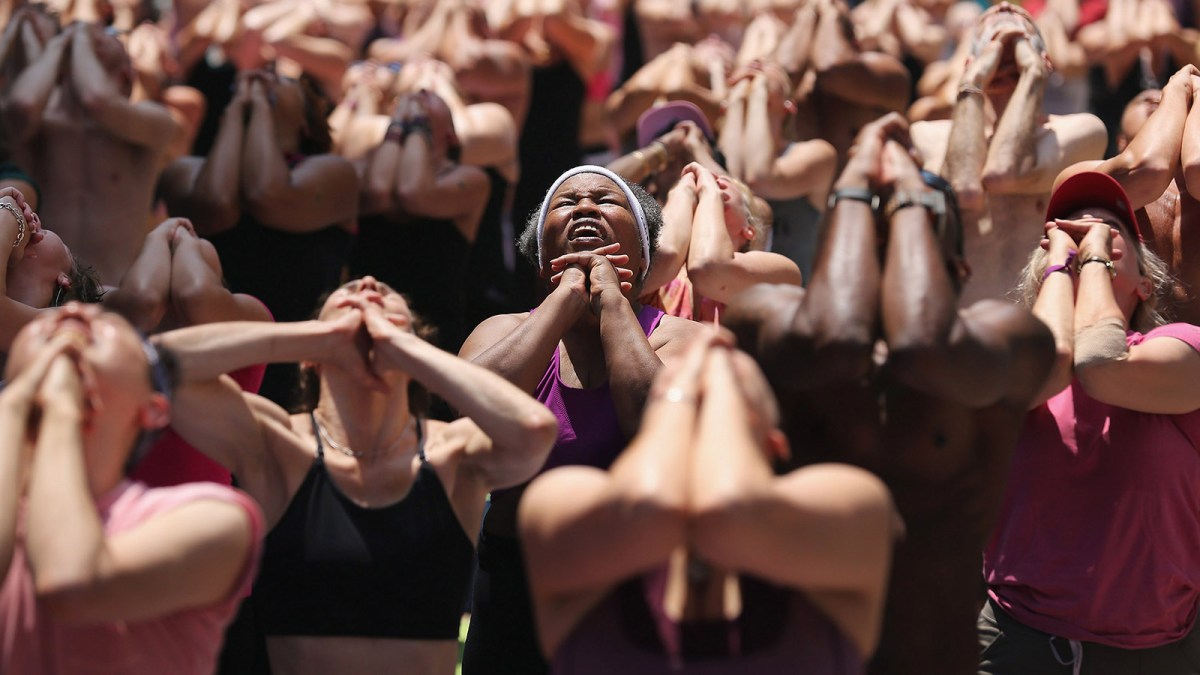In the summer of 1896, a heat wave, dense and deadly, settled over New York City. In a time before air conditioners, average indoor temperatures neared 120 degrees, forcing people out of their apartments and into the streets, or to makeshift sleeping arrangements on rooftops and fire escapes. Over the course of 10 days, the spell killed around 1,500 people.
A young Teddy Roosevelt, then the city’s police chief, was shocked at the mayor’s lack of initiative in addressing the human suffering. A progressive to the core, Roosevelt believed people’s welfare in the heat was the government’s responsibility, so he took matters into his own hands. He brought a block of ice to the Lower East Side precinct, where he shaved off chunks for the city’s poor immigrants to help them cool off. It was a simple idea with an ambitious heart that potentially saved lives.
New York has a lengthy history of debate over the city’s — and, by proxy, landlords’ — responsibility for providing residents with shelter from the elements. These clashes are in part a symptom of big-city living, but they are also symbolic of a social contract unique to New York. In 1957 — a time when heat waves were rare, and the city was more concerned with keeping New Yorkers warm in the winter — the Board of Health approved a regulation mandating that all tenants have heat from October 1 through May 31 of every year. Any time the outdoor temperature dipped below 55 degrees, the rule said, landlords had to maintain an indoor temperature of at least 65 degrees.
And the city meant it. The New York Times archive tells a protracted story of the city’s efforts to hold landlords accountable for their tenants’ wellbeing. In 1957, a Park Avenue landlord was jailed for five days for not providing adequate heat to his tenants (the rent was a pricey $480 per month!). In 1960, a citywide crackdown on landlords who failed to install central heating threatened a $1,000 fine, a stint in jail up to one year, or both. With the declaration of Heating Season, New Yorkers would stay warm in the winter.
In 1975, the city went one step further, passing a law known as the Warranty of Habitability, declaring that every citizen has a right to safe and livable housing. Property owners who failed to meet these basic standards faced serious consequences.
But rising temperatures and more frequent heat waves have created a new challenge: keeping residents safe inside buildings that were built before the world started to warm, back when the main element people needed protection from was the biting chill of a winter storm.
Unlike the drama of a visible weather event, like a horizon roiling with thunderheads, heat is often misunderstood as uncomfortable but harmless. In fact, it’s the opposite. On average, heat kills more people in the United States each year than any other natural disaster. In New York City, around 120 people die from heat exposure annually. Eighty percent of them perish in their homes.
The buildings here are old — around 75 percent predate the ’60s — and built with materials that trap heat. The romantic brick of a West Village brownstone or the concrete slabs of a Midtown sidewalk grow saturated with heat in the summer, making it difficult for New Yorkers, many of whom are pedestrian by necessity, to avoid the steamy temperatures both indoors and out.
The problem is made worse by a geographic phenomenon called the “urban heat island effect,” which raises temperatures anywhere between 1 and 5 degrees higher than the surrounding, more rural areas. And climate change is turning up the heat even further. If our planet reaches the 3-degree warming threshold, which is possible by the end of this century if policies don’t improve, Yale Environment 360 estimates that the number of heat-related deaths in New York City could climb to 5,800 annually in especially hot years.
Heat poses a paradox for cities, which, by 2050, will house 70% of the world’s population: While it is widely accepted that dense, urban development is one feasible solution to address climate change, these same dense urban spaces transform into death traps during extreme heat events, or, what has essentially become summer. Still, recent progress in New York suggests that the inverse might also be true: By retrofitting cities to combat climate change, urban leaders might also be able to better care for the residents most exposed to rising temperatures.

People sleep at the cool marble-floor of the City Hall during a heatwave. Philipp Kester / Getty Images
Buildings and people — they’re what make New York New York. The buildings here create their own geography, forming peaks and canyons, the skyline from afar a glassy and geometric mountain range. They’ve starred in movies and been traversed by wire. Symbolism aside, the buildings are here for one thing — the protection of the people within them. That’s what the law has mandated. But a building’s obligations are changing.
In April of this year, the New York City Council passed a package of seven bills called the Climate Mobilization Act, with the goal of reaching carbon neutrality by 2050. The new law has been described as “aggressive,” “lofty,” and “unprecedented,” and it is. It’s the city’s Green New Deal, designed to keep up with the goals of the Paris Accord, erasing the climate impacts of a hive of 8.6 million people. In many ways it’s as bold and demanding as all the New Yorkers who helped pass it.
A large part of the law is aimed at buildings, which are leaky and inefficient and accountable for nearly 70 percent of the city’s greenhouse gas emissions. “What we’re starting to understand is … if our shelter is inefficient, it’s creating greenhouse gases that are creating climate change and that’s changing weather patterns, it’s changing heat, causing floods,” John Mandyck, the CEO of the Urban Green Council, a nonprofit that played a big role in passing the new climate legislation, explained to me over the phone. “We’re starting to understand that shelter not only impacts what happens inside, it also impacts what happens outside.”
While the role of buildings in New York has long been that of protectors of the people, the Climate Mobilization Act demands that they become something entirely new: protectors of the planet.
Targeting buildings that are 25,000 square feet or larger, the new law requires real estate owners to meet new emissions standards in two compliance periods — 2024 to 2030, and 2030-2050 — with increasing enforcement in the second period. A new department, the Office of Building Energy and Emissions Performance, will oversee compliance and a financing program that will help assess and develop payment plans for buildings’ overhauls using carbon offsets, carbon trading, waivers, and renewable energy credits. Landlords who fail to meet the new emissions requirements will face steep fines that could exceed $1 million.
As the program is carried out, the city estimates that it will create 3,600 construction jobs each year and hopefully thousands more to maintain everything that’s being built. But as is the case with most endeavoring new initiatives in New York City, not everyone is happy about it: Members of the real estate lobby have, unsurprisingly, voiced concerns over the costs of the required retrofits, and warned that the regulations could discourage landlords from renting to industries that could bring jobs to the city. Carl Hum, general counsel for the Real Estate Board of New York, told the Times in April: “The overall effect is going to be that an owner is going to think twice before she rents out any space: ‘Is the next tenant I’m renting to going to be an energy hog or not?’”
Hum also warned that exemptions included in the law will undermine the goal of lowering emissions — houses of worship, rent-controlled apartments, and certain types of affordable housing are all exempt from carbon caps. These exemptions are concerning for some environmental justice coalitions as well. In a press release put out in April, New York Energy Efficiency For All (NYEEFA) stated that while it is important that low-income residents not shoulder the costs of building retrofits, “In New York City, residents of affordable housing often live in the city’s oldest buildings, with inadequate insulation, leaky windows, and inefficient heating and cooling systems. These problems lead to unhealthy living conditions and high energy costs, and climate change will continue to make them worse.”
It’s an achievement that New York has stepped in to lead the climate fight by holding landlords and other parties accountable, NYEEFA acknowledged, but what is it doing to safeguard its most vulnerable residents? “We need a solution that addresses the outsized impacts of climate change faced by under-resourced communities.”

Mario Tama / Getty Images
In 2016, WE ACT for Environmental Justice, a nonprofit based out of northern Manhattan, partnered with several media outlets and community organizations in a participatory research study called the Harlem Heat Project. Heat sensors placed inside a variety of residential buildings (with residents’ permission) provided a stark picture of dangerous indoor heat in vulnerable parts of Manhattan: Indoor temperatures in Harlem were, on average, 7 degrees higher than outdoor temperatures, making conditions during a heat wave deadly.
“Reducing the amount of carbon emitting into the atmosphere is important, but we can’t be doing that at the expense of the health of low-income people and people of color,” Aditi Varshneya, a former outreach coordinator at WE ACT told me. “That is non-negotiable.”
When Varshneya and I spoke in July, New York teetered on the brink of its first heat wave of the summer, a byproduct of Hurricane Barry, which had just pummeled the Gulf Coast. While the rest of New York planned to hide out from temperatures with a feel-like index of triple digits, WE ACT volunteers were gathering, ready to continue their research.
This summer, New York State set aside $6 million in federal dollars for the Home Energy Assistance Program, which provides cooling assistance to low-income residents on a first-come-first-served basis. With half that budget in the summer of 2018, the program helped only 8,000 households statewide — not nearly enough to address the need. For those who cannot afford air conditioning, the city provides cooling centers where people can gather to escape the heat. WE ACT’s latest initiative was a study on cooling centers and whether or not the program was an effective response to the public health risk of extreme heat.
Just a couple of days earlier, I had followed a rather understated sign, written in 13 languages with no extraneous images or details, into a library that was nearly 100 years old and made a regal impression on the otherwise dingy Brooklyn block. I had been on a walk with my 3-month-old. We had bitten off more than we could chew, and needed a respite from the heat. The sign’s font was blunt and sans serif and delivered a message succinctly: If you don’t have an air conditioner or other means to stay cool, come in and stay cool with us.
Inside, the building buzzed with the activity of internet-browsing teens and newspaper readers chatting over headlines. Human life, thriving in the comfortable, air-conditioned chill, burst forth from every book-lined corner. It wasn’t quiet, but it was cool and it served its purpose. Soon my daughter and I were recharged and ready to get back on the road.
But had I not noticed that inconspicuous sign on previous walks, I wouldn’t have known that we could find refuge there. This was one of the issues with cooling centers that Varshneya’s team was investigating: their relative obscurity, and whether or not that prevented people from using them. Cooling centers were a great idea in theory, but were they actually useful to the people whom they were supposed to help?
Questions like this one illustrate why participatory research is necessary for addressing climate change in large urban areas like New York, Varshneya said: The people who will be affected by public policy need to participate in the studies that shape it. “We want to give communities agency, a voice at the table, and the ability to have input in the decisions and actions that shape their lives,” she told me.
That’s how you fight climate change and protect vulnerable communities at the same time.

A teen plays basketball in the shade of a bridge along Manhattan’s East River on August 27, 2014 in New York City. Spencer Platt / Getty Images
Just six miles northeast of Midtown sits a small island at the confluence of three rivers: the East, the Harlem, and Bronx Kill. Randall’s Island is technically part of Manhattan, but its amusement park-like infrastructure of playgrounds, ball fields, and a driving range give it an unmistakable vacation vibe. Since being purchased from the Canarsee tribe in the 1600s, the island has served a range of purposes, first as a military post, then a private refuge, the site of a cotton mill, and eventually, after switching hands several more times, a haven for “social facilities” — asylums, orphanages, hospitals, and their grim cousin, a burial ground. Today, Randall’s is well known to recreators as a place for picnicking and playing catch, and, fittingly, it’s also the epicenter of the city’s Department of Parks and Recreation.
The 5-Boro Building, as folks in the department call it, is a nondescript, beige-brick fortress where the department’s fleet of electric vehicles recharges after a day in the field, where workers make the signs that tell you NO PETS, and where you can find any number of experiments, both speculative and proven in nature, being conducted on, of all places, the roof.
On a stormy and sticky pre-heat-wave day in July, I hustled to keep up with Max Lerner, development coordinator for 5-Boro’s sustainability project, as he wound his way through a small utopia of bees and solar panels, towering tomato plants and sprays of wild flowers. In between were mats of sedum, a miniature, low-growing plant with plump, bubble-like leaves that’s as cute as it is efficient at storing water and providing insulation for the building below. There was even a little bed of corn, not suitable for a maze, but proud enough, with full heads ready for shucking.
The 5-Boro green roof is not New York’s largest, but it is perhaps the most cutting edge, with 40 different systems spanning about an acre. Here, a team of engineers and technical staff have experimented with techniques like using GaiaSoil (made from recycled styrofoam, which is lighter than most dirt) mixed with compost, and planting peppers in cast-out PVC pipes. They began their efforts 12 years ago and were one of the first agencies in the city to adopt a green roof. Since then, they’ve honed and tested, and now they’ve found their expertise is in high demand: Green roofs are included as one of the mandates for certain buildings in the Climate Mobilization Act.
Growing succulents and native plants on a roof may seem like a whimsical undertaking, but Lerner explained that green roofs can put real numbers up on the board in two regards: They cool buildings, and they save money. Research has shown that vegetative coverings can reduce rooftop heat fluctuation by 72 percent as compared to a standard black roof, with measurable impacts below: One study showed that for an eight-story building, a green roof reduced peak-hour cooling load (the amount of AC required in the hottest part of the day) by 6 percent. In the upper floors, which are often the hottest, reductions reached nearly 25 percent. With the correct balance of soil and shrubs, another study found that a green roof can shave 15 percent off of a building’s annual energy consumption.
There are benefits outside the building, too: Green roofs sequester carbon and absorb solar radiation, reducing pollution as they reduce temperatures. One study showed that greening just 6 percent of Toronto’s roofs could reduce the urban heat island effect there by up to 3.6 degrees Fahrenheit.
Prior to venturing out on to the roof, Lerner and I had taken shelter from a downpour in the office of Lerner’s boss, Artie Rollins, the assistant commissioner for citywide services. Roof access, with its views and verandas, has always felt so cloistered and exclusive to me. It’s where a hedge fund friend might have you over to watch fireworks on the Fourth of July. I asked Rollins if green roof technology was for everyone, and not just people with six-figure salaries. Could we install green roofs in the communities that need them the most?
“One hundred percent, it could be done right away,” Rollins told me, walking toward a set of bright windows making up one of his office walls and gesturing toward a grove of tall buildings with flat, empty roofs. “Those buildings are a perfect example right there,” he said decisively.
Rollins acknowledged that the initial cost would be steep (the upfront cost is 39 percent higher than installing a conventional roof, according to a parks department study), but it would pay for itself with an annual energy savings of approximately $8 per square foot. And in Rollins’ telling, it was only a matter of time before the New York City Housing Authority began installing them on the rooftops of low-income and moderate-income buildings to help with cooling. In fact, the authority provides for green roofs in its Sustainability Agenda. In a 2019 progress report, it confirmed that designs were complete for 30 green infrastructure projects, with construction to begin shortly.
Green roofs, with their promise of natural cooling and solar energy, aren’t the ultimate climate solution. Encouraging and investing in mass transit and decreasing (and greening) air travel would arguably contribute more to lowering emissions on a larger scale. And they aren’t the singular way to address building inefficiencies in low income housing or access to affordable energy either. But they are one good start. They are evidence of a technology that, in a city, can work for the climate, for buildings, and for residents alike.

People brave high temperatures while practicing bikram yoga as part of the annual Mind Over Madness event in Times Square on June 20, 2012 in New York City. John Moore / Getty Images
In 2008, a disabled, wheelchair-bound man named Ellis Cooper died of heatstroke during an early June heat wave. His Brooklyn apartment complex had a central heating and air-conditioning system and because of it, the landlord prohibited tenants from using individual AC units. As provided by the law, the landlord supplied heat to the building through May 31 of each year, during Heating Season, and then afterward, changed the heat over to air conditioning. But the heat wave had occurred unseasonably early, before the landlord had been able to get the air conditioning going throughout the building.
The tenant’s family sued, in a case called Cooper vs. Starrett City Inc, claiming that the owner of the building was responsible for Cooper’s death.
The court ultimately sided with the landlord, who had gone about his usual routine of switching over to AC in early summer. The extraordinary event of an early summer heat wave was responsible for Cooper’s death, the judge determined —that, and Cooper’s inability to get to a cooling center. But these events are becoming ever less extraordinary, and if WE ACT’s research supports what many residents believe, access to cooling centers is not universal, nor universally understood. The case suggests that moving forward, New York may need to create a Cooling Season, too.
Back on the roof at 5-Boro, as I traipsed in the wake of Lerner, who was eager to show me its bees, the garden put off a grand energy. Its pungent air smelled like a forest after a rainstorm, and the faces of its solar panels turned skyward like hungry sunflowers. Life carried on below our feet in the building’s garage, mechanics tinkering with the fleet. There was no doubt that the cool temperature the roof provided mattered to the existence of the Department of Parks and Recreation employees below, just settling in to a day’s work. It was obvious in that moment just how non-negotiable the human right to cooler temperatures is: It’s the only way we will keep going as New Yorkers, as people on planet Earth.
An idea, a green roof, a collective of people willing to investigate issues of environmental justice, and an aggressive new law — these are all individual narratives in the bigger saga of New York as it faces climate change. There is a certain fearlessness here, there always has been, in its people and in the regulations used to protect them, from writing into law a landlord’s duty to provide a safe and livable environment for tenants to requiring building owners to make their properties more efficient, safeguarding the environment outside their walls as well.
New York has declared it for decades: A livable environment is a basic human right. It’s the same principle Teddy Roosevelt defended when he delivered ice to the city’s newest residents on the Lower East Side. And now, more than a century later, the idea is spreading. It’s why children sue our government for failing to act against climate change, and activists sue oil companies, claiming they’re liable for climate-related disasters. And it’s why other cities should take note: As our lives drift predictably city-ward, the buildings therein need to do more to protect us, both inside and out.
New York’s Climate Mobilization Act is so aspirational because it’s an attempt to hold power to account for the environment, one skyscraper at a time. The Empire State Building, decorated daily in lights, the Chrysler Building, eagles defending its art deco turrets, and even the narrow, looming tower on Central Park visible anywhere in the city, a compass for anyone in need of knowing which way is north — the buildings — they’ve always made New York New York. But it’s the people, ambitious and abundant, who bring it to life.

